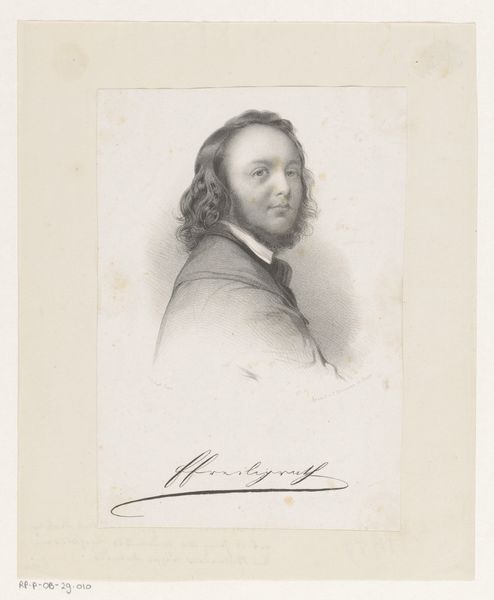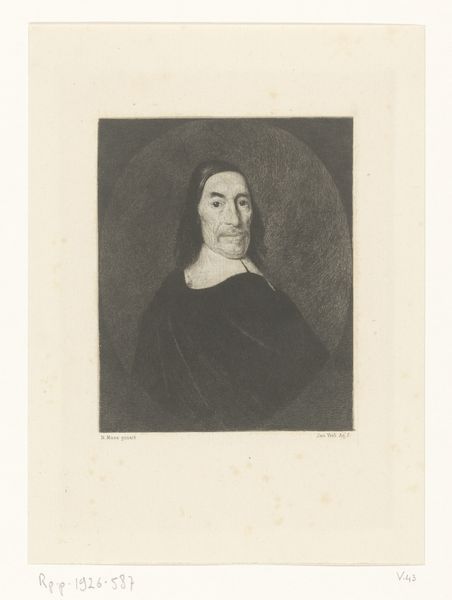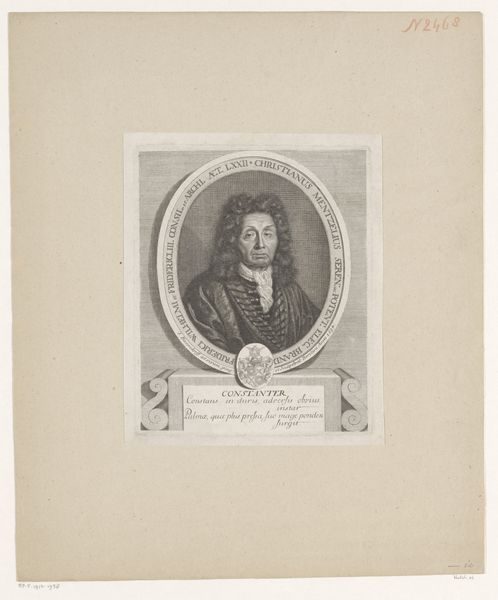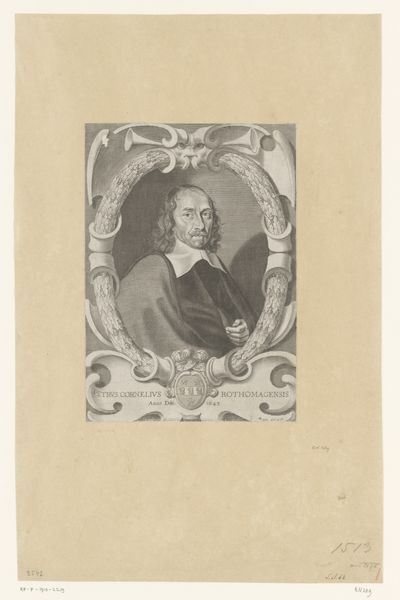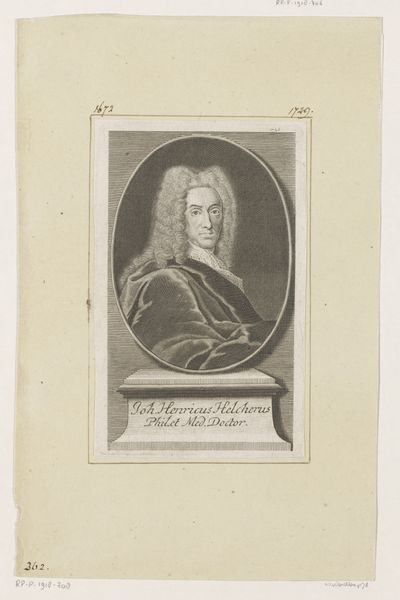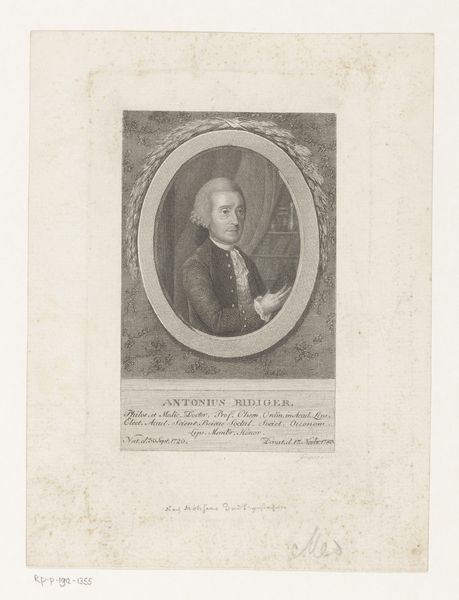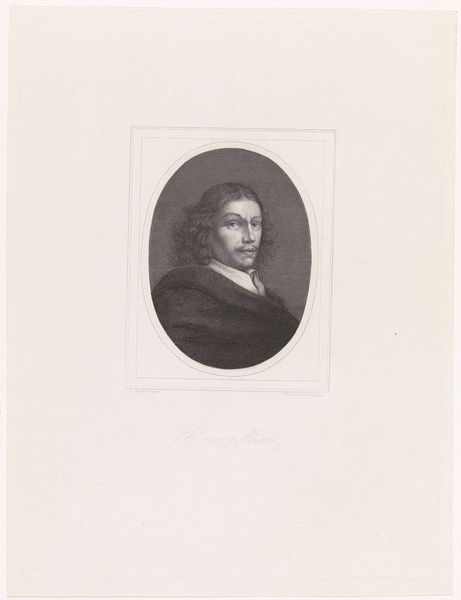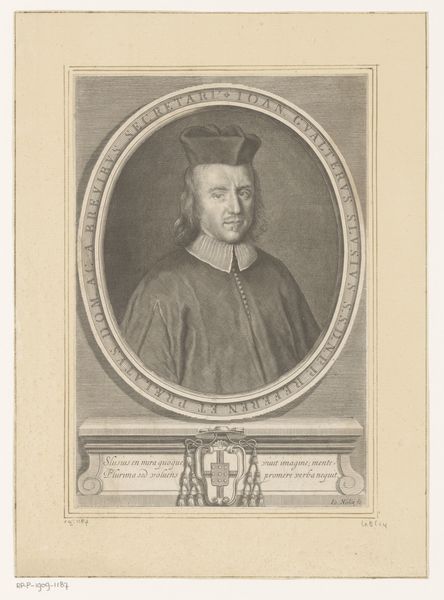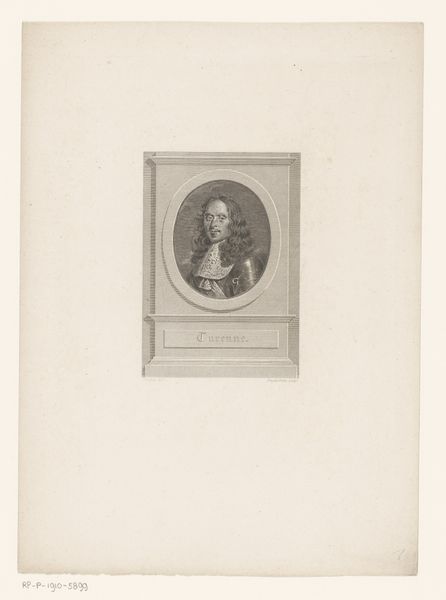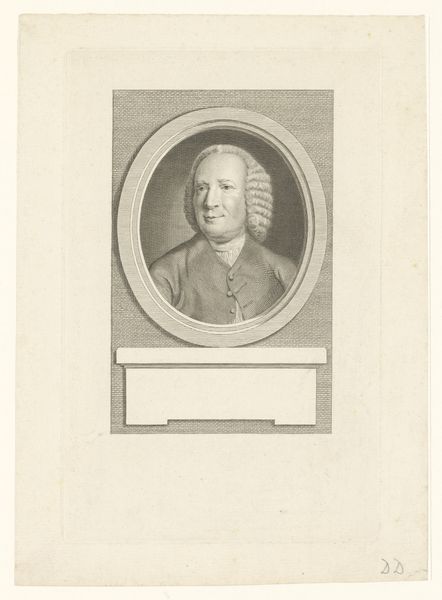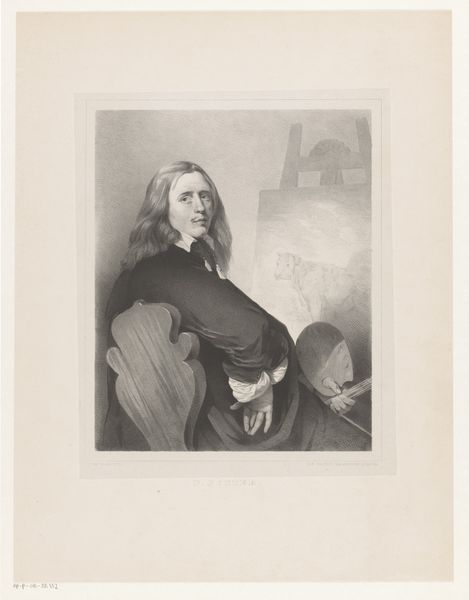
Murillo, after a self portrait by the artist 1837 - 1847
0:00
0:00
drawing, print
#
portrait
#
drawing
# print
#
figuration
#
history-painting
Dimensions: Sheet: 14 15/16 in. × 11 in. (38 × 28 cm)
Copyright: Public Domain
Curator: Hmm, I find this "Murillo, after a self portrait by the artist" absolutely mesmerizing, it's etched with such precision! It was created sometime between 1837 and 1847 by Auguste Blanchard fils aîné. Don't you just feel the gaze of history when you look at it? Editor: My first impression is one of thoughtful restraint. I notice the very careful detail of the engraving and the framing device makes the print look like a fragment of a stone carving. You can really see the work put into this— someone took real care replicating this portrait. Curator: Care is a lovely way to describe it, but there’s also an element of admiration isn’t there? Blanchard fils aîné, working quite some time later, resurrecting Murillo through the precise labour of his own hands… that resonates with me deeply. Editor: Indeed! Considering the reproductive nature of printmaking and how it was distributed, the artistic labor and production can be overlooked when analyzing portraiture. Was this intended to make the portraits accessible to those who might not afford the original? Was there even an original to be had? Curator: Ah, there you’ve touched upon the crux of it! It poses such fascinating questions. Did Blanchard fils aîné seek only to replicate, or to reimagine and, dare I say, complete? And how is our engagement with Murillo shifted by its translation into printmaking so many years later? It feels like echoes of echoes, doesn't it? A hall of mirrors, but made of ink and paper! Editor: The composition places emphasis on materiality. We're drawn to the tools and skills that bring artwork into existence. How prints can democratize images is critical and makes us rethink art history in new terms. Curator: Beautifully put! It leaves me pondering how artistic expression is both immortalized and changed across time and mediums. It's like capturing lightning in a bottle, then recasting the bottle in glass from a different century. Editor: It makes me consider how social conditions and technology converge to influence visual culture— how techniques determine both access and meaning.
Comments
No comments
Be the first to comment and join the conversation on the ultimate creative platform.
